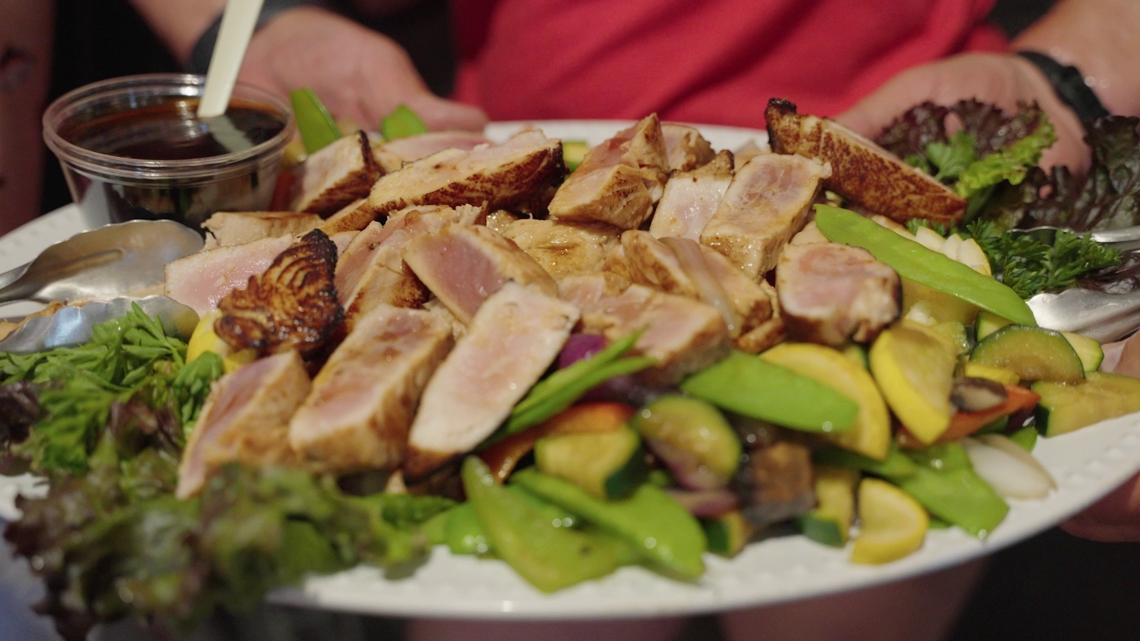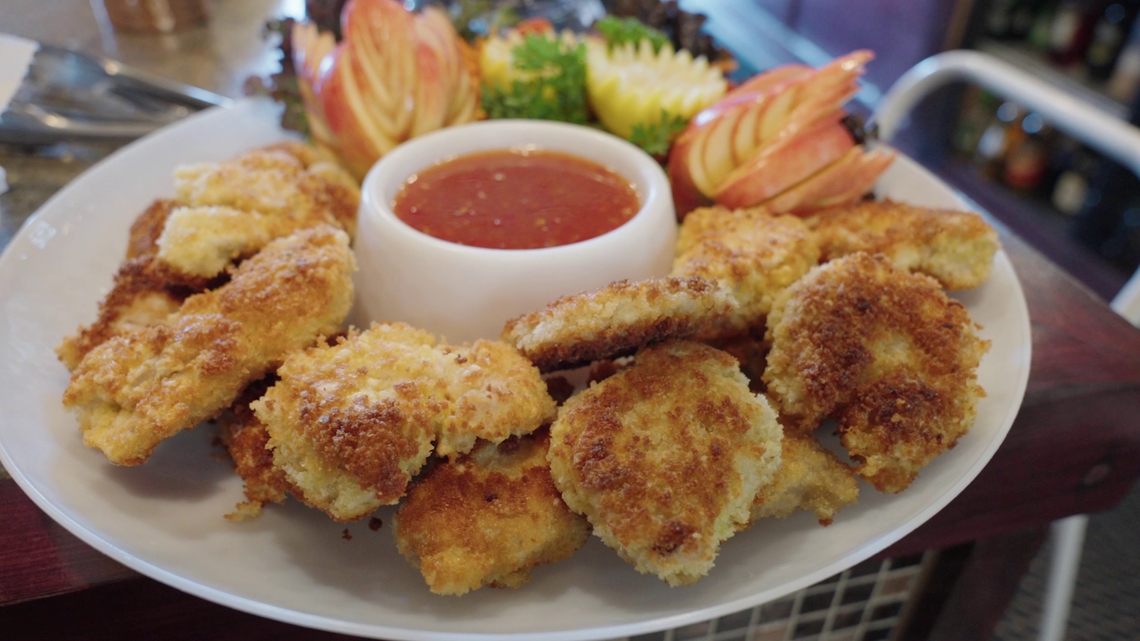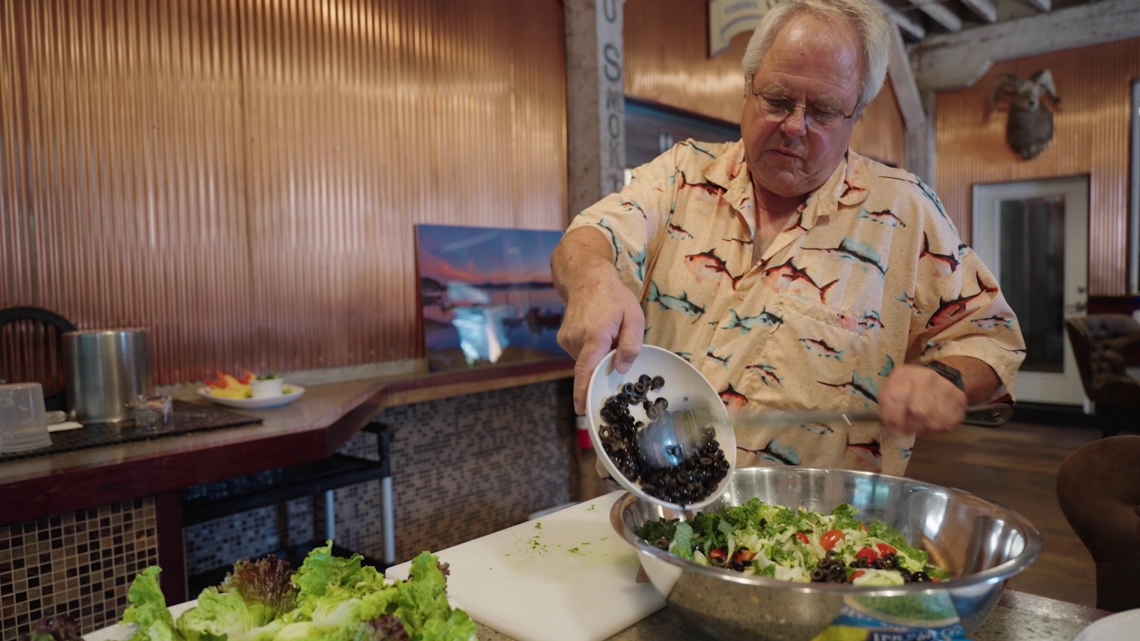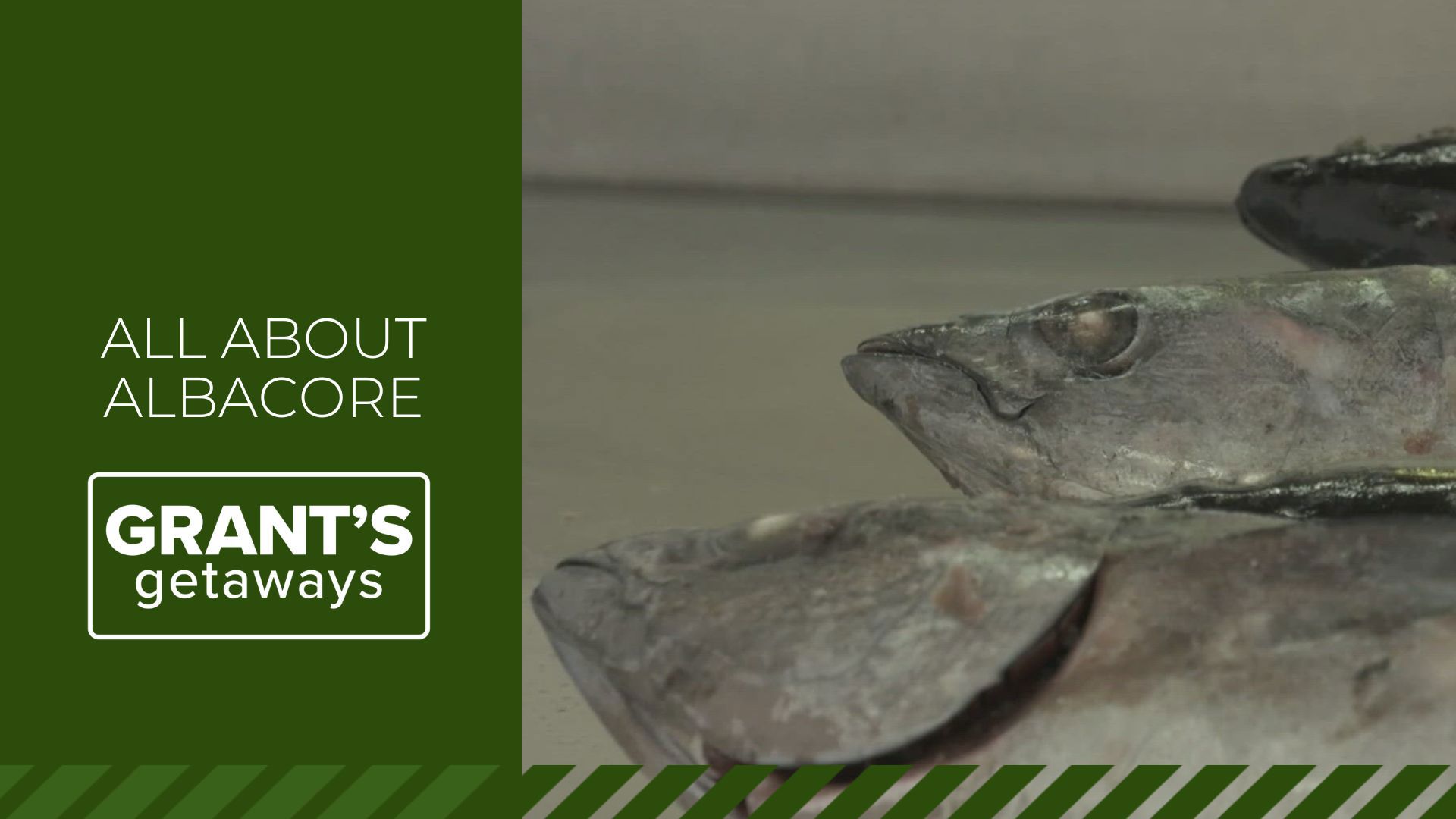ASTORIA, Ore. — One of Oregon’s most valuable seafoods is more popular than ever, but its nickname may fool you: chicken of the aea.
It’s albacore tuna, and it is a fish that is grounded in Oregon commercial fishing history that reaches back nearly a century ago. Back then, West Coast fishermen went far out to sea in search of the albacore, also known as “chicken of the sea.”
Albacore tuna entered Oregon fish markets in the 1930s when Oregon ports from Coos Bay to Astoria were home to large fishing fleets, dozens of canneries and thousands of employees who processed the catch.
While Oregon’s large-scale canneries are long gone, albacore fishing techniques haven’t changed much at all, according to Steve Fick of Fishhawk Fisheries.
“The fishermen use poles or lines with colorful jigs attached, and when the fish hits, the fishermen pull them in by hand. It’s that simple to catch fish that weigh 10-25 pounds. It’s a lot of handwork, too, and when you find the albacore schools, the fishermen are constantly pulling lines in by hand,” Fick explained.
Fick added that Astoria continues to offer the freshest catches of salmon, black cod and varied rockfish species that are caught just offshore: “There’s a higher demand for seafood in general because it’s a healthy alternative for protein. We are seeing more and more people cooking at home. Many of our customers will call with an order, and we’ll have it ready for them when they show up.”
Fick noted that 10 million pounds of albacore will be landed in Oregon coastal ports this year, and the tuna is worth up to $60 million, so it’s a critical and valuable part of small coastal economies.
He also noted that there are many tuna species in the Pacific Ocean called bluefin, yellowfin and skipjack, but albacore is the only true white-meated tuna; the others are red meated.
“This is the best quality fish you’ll get, and the way it’s canned or processed makes it king of the tunas,” said Fick.
Our group of guest diners gathered at Astoria’s Pacifick Distillery and Restaurant, where seafood is always top of the dining menu.
Today, we prepared three recipes with albacore, king of the tuna.
Albacore recipe No. 1
Fick noted that albacore is far more affordable than halibut, and he enjoys a simple seared tuna:
“We’re going to slice the loin into small pieces — 2 inches or so — and sear the fish in a pan over a hot fire. I marinate the pieces for just 10 minutes, and I like to try varied marinades. I will cook for just a minute or so on each side, and that’s it! It will be served with rice and stir-fry vegetables, and is a simple meal.”


Albacore recipe No. 2
Pacifick Distillery and Restaurant Chef Cliff Fick sliced more tuna from each albacore loin (there are four loins to a fish) into 1-by-2-inch chunks. Each piece was drenched in flour, then into an egg bath and finally covered with crunchy Panko. He placed each piece into hot oil and watched it closely:
“When these pieces are brown on one side, I turn them over and it doesn’t take long. There’s nothing worse than over-cooked fish; especially tuna, because it will dry out and lose its flavor if overcooked.”
Steve Fick added, “I like to place the slices on a platter with a hoisin dipping sauce, and it provides a nice hors d'oeuvres or a fish-and-chips type meal.”


Albacore recipe No. 3
The last recipe uses canned albacore tuna — Fishhawk Fisheries does that, too — for a tuna salad unlike any you’ve ever tried: “We prepare lettuce, chopped kale, black olives, tomatoes, grated cheddar cheese, red onions and put some cashews and peas on it. This can be dinner or a delicious lunch, and it’s all basically good for you.”
Our guest diners agreed: Oregon albacore is too good to pass up.
Walt Kastner noted, “Outstanding! And what‘s amazing to me is how many things you can do with tuna. From salad to fish and chips, it was all really good, and that seared tuna was amazing.”
Mike Mennell said, “I think I enjoyed the seared tuna the best and the hoisin sauce that Cliff made to go over the top was really good too.”
His wife, Shannon Mennell, agreed: “I really like the seared tuna — soft and moist — and the taste was very good, did not taste like typical fish at all.”
Sue Harsin noted that her favorite was a toss-up between the fried tuna and the seared tuna: “They were both delicious, and I would love to try cooking this at home.”
Kerry Harsin agreed: “When I cook tuna at home the next time, I’m definitely going to be on a fast-learning curve from these recipes. I need to round up my recipes as these were all very good.”
Diverse and delicious recipes and each was a hit with the crowd; the albacore season continues through October.
Each of the albacore recipes is unique, delicious and so easy that anyone can try their hands at cooking Oregon albacore tuna a new way.
“Albacore is different — high in protein, low in fat,” said Fick, who smiled and then chuckled as he added: “The best part is that you can do so many more things with albacore besides make a sandwich or a casserole out of it.”


Be sure to watch the weekly half hour program of Grant’s Getaways. The show airs each Saturday and Sunday at 4 p.m. on KGW.
You can also learn more about many of my favorite Oregon travels and adventures in the Grant’s Getaways book series, including:
- "Grants Getaways I," Photography by Steve Terrill
- "Grant's Getaways II," Photography by Steve Terrill
- “Grant’s Getaways: 101 Oregon Adventures,” Photography by Jeff Kastner
- “Grant’s Getaways: Guide to Wildlife Watching in Oregon,” Photography by Jeff Kastner
- “Grant’s Getaways: Oregon Adventures with the Kids,” Photography by Jeff Kastner
The book collection offers hundreds of outdoor activities across Oregon and promises to engage a kid of any age.
You can reach me: Gmcomie@kgw.com

